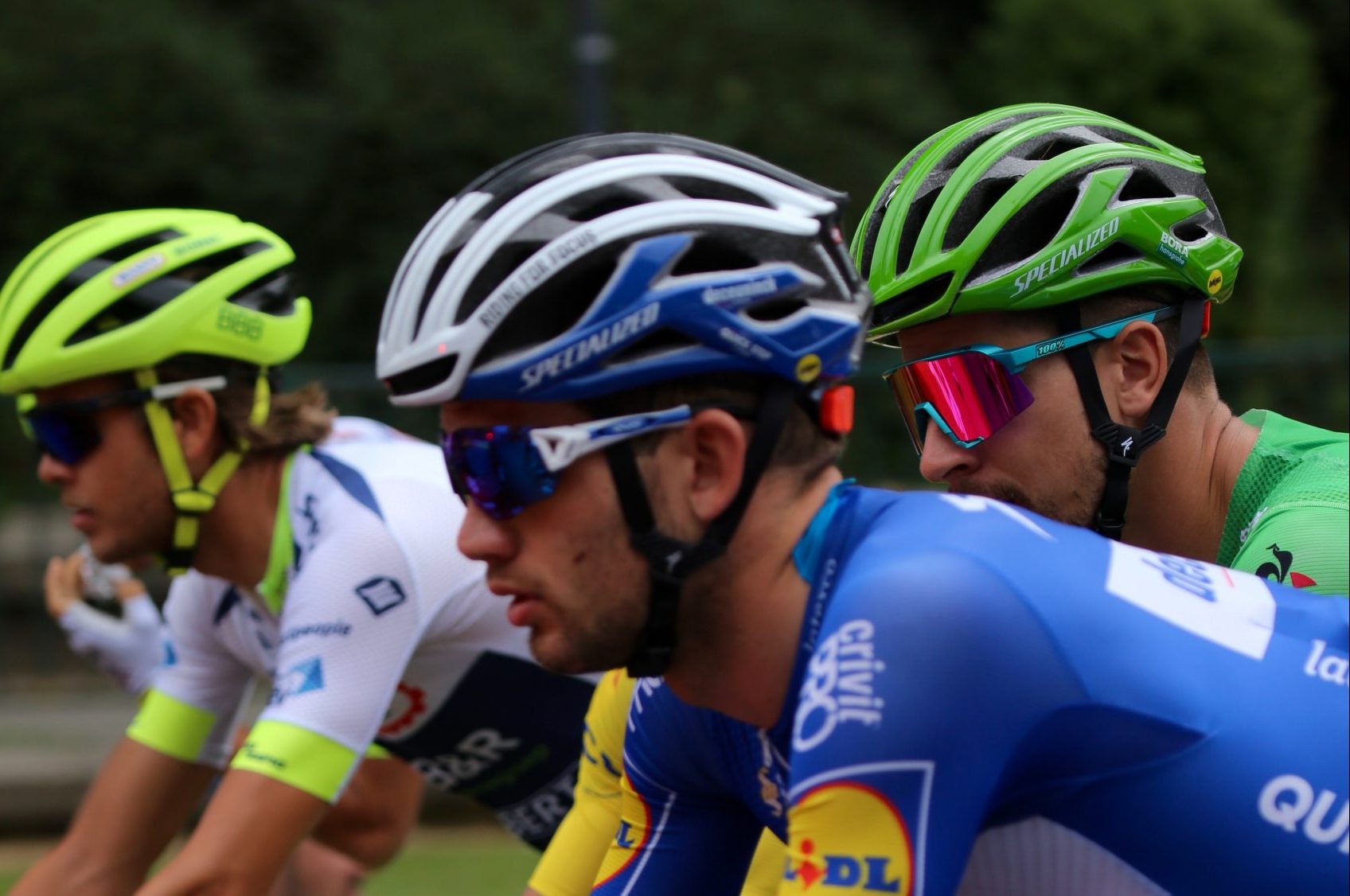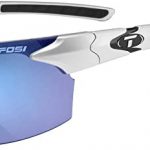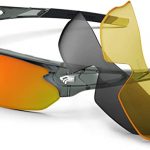Polarized lenses are created by using a filter that blocks the light waves that are not aligned with the polarization of the lens. This is done by cutting a thin sheet of polyvinyl alcohol (PVA) into a polarized lens shape. Non-polarized lenses are not filtered in any way, so they let through both polarized and non-polarized light waves.
While they look pretty similar, polarized and non-polarized glasses protect your eyes differently from UV light. Polarized blocks direct light into your eyes so they block the strongest UV light such as glare from sunlight bouncing off windows. Polarized protects your eyes better.
Polarization In Sunglasses And How It Works
Polarized sunglasses have become more popular in recent years and readily adopted on premium cycling sunglasses. Polarized lenses are made up of two sheets of polarized material that are pressed together. These sheets have parallel lines that are perpendicular to each other.
Light waves that pass in an angle through these parallel lines will be refracted at a different angle than light waves that pass through them in a straight line. This is the reason why polarized lenses work, they filter out certain angles of light so your eye can only see what you want it to see. This is why polarized lenses block the bright light of horizontal light off of shiny surfaces like windshields.
It is important to note that different makers like Oakley and Tifolsi have their own version of polarization on sunglasses. While they are very close in that they use the same basic technology, certain manufacturers can have slightly better contrast.
The Benefits Of Wearing Polarized Sunglasses
Polarized lenses are not just for fishing and hunting anymore. They can be used in a variety of ways to help people with different needs.
Polarized glasses offer a number of benefits, such as:
- Reduction in glare from the sun and other sources
- Reduced eye strain
- Improved contrast sensitivity
- Improved depth perception
If you are getting sunglasses anyways, getting polarized ones is usually pretty close to the same price and it’s well worth it. In fact, you can even find many on my best cheap cycling sunglasses list that have polarization for a win-win.
Non polarized sunglasses offer every other aspect of cycling sunglasses, but they don’t block that bright glare of light that can affect vision and can cause headaches.
The Cons Of Wearing Polarized Sunglasses
Polarized lenses have a lot of really great benefits when there is a lot of light, but in some other situations they are not ideal.
Polarized lenses are not a good idea when you have to work in front of a computer or watch TV, in particular LCD screens. Since polarized lenses cut down on light, when there is less light to begin with regular sunglasses or even just clear glasses are more ideal.
Obviously any sunglasses make it hard to see in the evening or when biking at night. Polarized just make it a tad worse. If you are biking in the evening or in low-light conditions, I’d recommend picking up a pair of quality clear cycling glasses.
So there are a few cons to wearing polarized glasses but they do fall within what you’d expect from any sunglasses.
How Polarized Lenses Protect Us From UV Rays
The polarized lens is a type of eyewear that reduces glare and direct UV rays. They are also used to improve contrast and color perception. To get both UVA and UVB protection, polarized lenses need to also have a UV coating on them. These are separate but complimentary technologies.
Polarized lenses can be helpful for those who spend a lot of time outside as they protect the face from sun damage. The glasses can reduce glare, which is caused by reflected light, and UV rays that cause eye damage, such as cataracts and macular degeneration.
Non polarized sunglasses also protect against UV, but not against the intense glares that can happen that can cause eye damage.
How To Select Your Best Pair Of Sunglasses For Different Situations
Depending on when and where you are riding, there are different features you want to look for in your new sunglasses.
Polarized Sunglasses: These are designed to reduce the glare from water and snow. They also reduce the sun’s blinding glare, which can cause a lot of eye strain.
Non Polarized Sunglasses: These are designed for everyday use and work well in all kinds of conditions. They also provide protection from UV rays. Non polarized lenses don’t protect against glare but protect in every other way.
Clear Sunglasses: Clear sunglasses are designed to be worn when you’re in an environment with a lot of light or when you need clear vision for some task like driving or biking.
Yellow Sunglasses or Tinted Sunglasses: These all will filter out certain wavelengths of the light but reduce glare as well.
Wearing cycling glasses to protect your eyes is a smart idea, and choosing the right ones for the riding you are doing is even smarter. Quite often riders like me get a set of sunglasses and a set of clear cycling glasses to cover all the bases. While photochromic glasses are actually generally pretty good for riding, I prefer to have two independent sets so that when I don’t want to filter any light (like riding near dawn) that they are just right for the job.
Why Choose Non Polarized Sunglasses Over Polarized Sunglasses?
There are several reasons you would choose non polarized over polarized:
- Cost. Polarization costs more money and sometimes it’s not in the budget.
- No need. If you cycle on trails, it’s not nearly as often that you need polarization.
- Not available. Sometimes it’s just not available on the cycling sunglasses you want. Sometimes you need to take what you can get.
There are many reasons, and the usual reason is that it saves money and it’s not important enough to put as a top priority for the rider.




